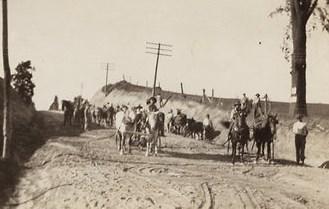
1 minute read
Farming on the Paris Plains: Unveiling Our Agricultural Legacy
The year was 1824, and scattered farmsteads had already taken root in the northwest corner of South Dumfries Township. The hardworking settlers toiled under the sun, reaping the rewards of their labour. The fertile soil yielded bountiful harvests, with fields boasting 18 bushels of wheat per acre, 25 bushels of barley, and 30 bushels of oats.
As time passed, more settlers arrived, drawn by the allure of the flat Paris Plains Scottish immigrants predominated, seeking the promise of fertile land beneath the dense oak forest. These pioneers, armed with considerable capital, recognized the benefits of machinery. The Paris Plains became one of the first areas to embrace reaping machines, revolutionizing wheat harvesting.
Advertisement
However, the journey was not without its challenges. The settlers faced a pressing obstacle: limited transportation routes. The Governor's Road, a meager path, served as their only connection to larger markets in Dundas and

Hamilton. Despite the farmers' growing yields, they struggled to sell their crops for cash. Bartering became the norm, as the circulation of money remained scarce.
The 1830s witnessed an influx of settlers, expanding the township's reach. The once-northeastern wilderness now teemed with life By 1841, South Dumfries Township stood tall, a testament to the collective spirit of its inhabitants. The first census in 1851 counted 4,297 souls, revealing the township's steady growth.
Change was on the horizon, as the parliamentary session of 1850 birthed new counties across Ontario Dumfries Township found itself divided, with the southern section (Paris, Glen Morris, and St. George) joining Brant County and the north aligning with Waterloo County. A glimmer of hope emerged in 1849 when road improvements, including the Governor's Road, eased the transportation woes The outbreak of the Crimean War in 1851 fueled demand for farm produce, bridging the gap between farmers and urban markets.
By 1860, machinery began to dot the landscape. Harvesters appeared, easing the workload in flatter areas. The township's population, however, experienced a slight decline of approximately 9% by 1861, settling at 3,916 residents. The town of Paris absorbed most of those who departed.










